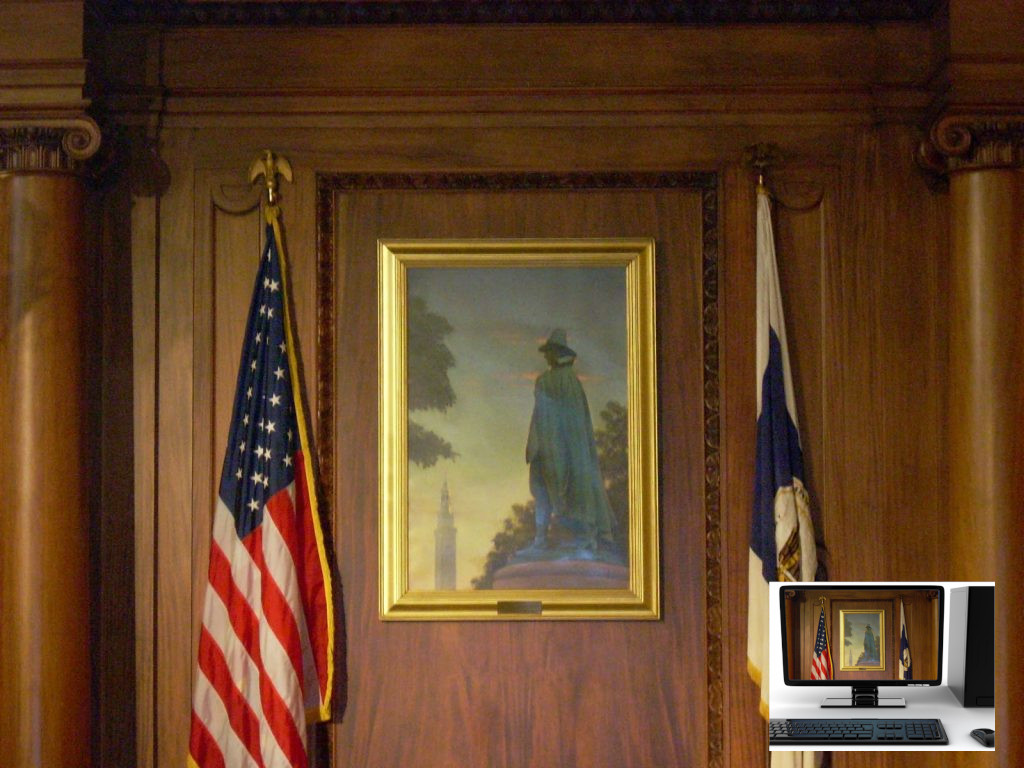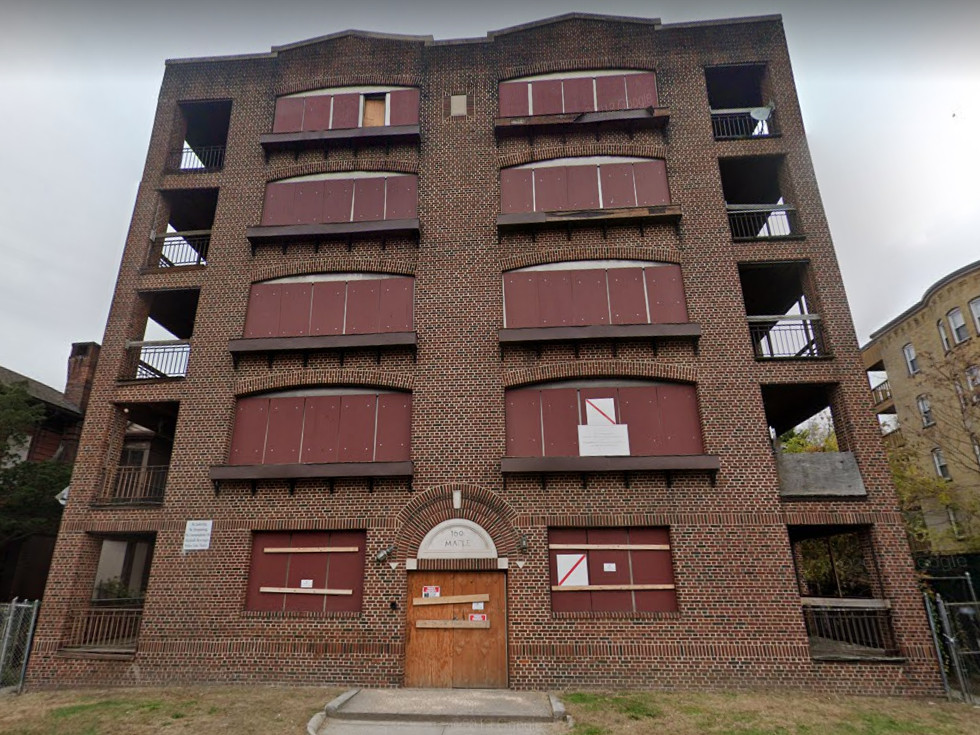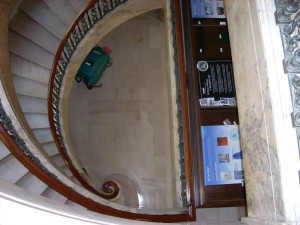Take My Council, Please: The Allen, Er, Maple Parsons Project…
At its November 14 meeting, the Springfield City Council confronted a largely ho-hum agenda of financial orders. However, one item revisited the scars of the tornado. Despite opposition from some, the Council approved Community Preservation Act (CPA) funding for the renovation of the Parsons Apartment block at 169 Maple Street.
The area between Central and Mulberry streets has long bedeviled city officials. Despite outwardly attractive rowhouses and apartments, redevelop has consistently fallen flat. Then in 2011, the tornado ran up Central Street damaging 169 Maple along the way. The meeting last Monday revealed that a prior developer had ended his quest to renovate the Parson’s block but another is ready to try.
Councilor Malo Brown and Tracye Whitfield participated in the meeting remotely. Councilor Kateri Walsh, whose husband had passed away late last month, was absent.
The meeting opened with committee reports. Ward 8 Councilor Zaida Govan, chair of the Mental Health Committee described an update with advocates and providers. Govan, who also chairs Maintenance & Development, also briefed the Council on contaminants in the city’s water supply. While the Water & Sewer Commission assure there is no threat to the public, the contaminant will endure until a new treatment plant opens in 2024.
Ward 1 Councilor Maria Perez, chair of the Environment & Sustainability Committee, described recent meetings on the Community Choice Aggregation Energy item before the Council. The item, once an action plan received state approval, would help residents choose and secure greener sources of electricity. Perez said Springfield households received 80% of their energy from fossil fuels. Perez later motioned to send the item back to committee. Councilors agreed.
Whitfield, an at-large councilor and Finance chair, described two recent committee meetings. The first involved the city’s stabilization account. The second covered that Monday’s financial items. Whitfield praised the $30 million bond, but announced her skepticism of the CPA funding for the Parsons block.
In 2015, the City Council voted to transfer the Parsons Apartment block, built in 1920, to Facta Non Verba, LLC. In 2019, the Council approved CPA funding for both the rowhouses and the Parsons block.
Facta Non Verba is controlled by Roger Roberge, a Wilbraham developer. Filings with the Secretary of State still list him as manager. Roberge had found success redeveloping the Sumner Avenue fire station and brownfields in Indian Orchard. Yet, his efforts along Maple Street have come to naught. Roberge could not be reached as of posting time.
Community Preservation Committee (CPC) chair Robert McCarroll told councilors that the city exercised the reverter clause in its deed to Facta Non Verba. City records show the city regained control of the building this past January. McCarroll said Davenport, which had recently renovated the Willys-Overland building downtown, had planned to buy building and renovate it.
The Council approved $98,000 in CPA funding for the Parsons Building for Facta Non Verba. (There was a separate appropriation for the rowhouses). Renovation was to cost $1.7 million. Between further deterioration of the building and the dramatic increase in constructions costs post-pandemic, McCarroll said the renovation would not cost $3.3 million. Davenport was requesting $250,000 and the CPC had agreed. The apartments would be rented at market rate and therein lay the problem for some councilors.
During McCarroll’s presentation, it was not clear that Davenport’s financing was contingent on CPA funds, but it would help. The company is also considering acquiring the rowhouses from Roberge, who had purchased them separately.
Some councilors, including Whitfield, were hesitant. Whitfield pointed the need for affordable housing in Springfield. She referred to stats that have found Massachusetts has only half as many affordable units as it actually needs.
CPA funding can go to historic preservation, housing or open space projects under state law.
The Parsons apartment block as a shy teenager circa 1938/39. (via Springfield Preservation Trust/WPA)
Deputy Director of Economic Development Brian Connors said the Parsons block had been difficult to market. The apartment units are massive. Only two units exist on each floor and the square footage is several times the size of the average studio. That could make a subsidized project impossible without considerably more in funding than CPA can allocate.
This was an off-cycle recommendation, which McCarroll admitted was rare. But he noted the recommendation centered on historic preservation given the building’s decrepit state.
“We felt strongly about it to help move the project along,” he said.
Councilor Govan concurred with Whitfield’s demand for more affordable housing, but also expressed concern about letting the city rot. Ward 3 Councilor Melvin Edwards, who represents this area of Maple Street emphasized the difficulties in renovating the building. He observed that several structures the tornado damaged had been difficult to restore. For example Several structures on the former MacDuffie campus remain semi-derelict.
Still, other councilors including Perez and Justin Hurst suggested it sent the wrong signal when affordable housing remained in short supply.
Ultimately, the Council approved the funding 8-4. Councilors Lavar Click-Bruce, Hurst, Perez and Whitfield dissented. The administration still needs Council approval, possibly later this year, to deed over the Parsons Apartment to Davenport.
The rest of the agenda moved smoothly. Comptroller Pat Burns presented the Revenue and Expenditure report for September. He said the report showed above average spending because the city made a $11.8 million debt payment that month.
The Council approved $514,000 for a senior job training program. Elder Affairs director Sandy Federico said the program had the capacity to train up to 28 people at a time. She said the training often involves improving their computer skills. The Council accepted the funds.
Councilors approved $400,000 for renovations to Donna Blake Park. Another $79,033 came finished out the city’s annual SHINE grant, an Elder Affairs program that helps seniors with health care issues. There was also a $10,000 grant from the State Police to counter trafficking of meth.
Three grants, each under $10,000, for the Elder Affairs and Library departments also passed the Council.

Shall we try this again? (via wikipedia)
The Council agreed to transfer a plot at Main and Waverly streets to Springfield Pharmacy. The pharmacy will build a multistory structure with affordable apartment and ground level retail. Another building transfer councilors approved was for 195 State Street. The former School Department building, a historic structure like 169 Maple, has had a tortured development history. The new owners are planning income-restricted apartments.
On the advice of councilors reauthorized the funding and taking of the former Friendly’s on Sumner Avenue. The lot will become parking for elementary school next door. The building will remain.
The Council greenlit a $30 million bond for a whole host of goodies. Among them is millions for roads and sidewalks. Columbus Avenue, in particular, is on deck for a rehab.
Nearly $7.5 million in separate bonding for school renovation projects also received Council approval. Among the big ticket items that will cover is a new boiler at Central High School and work at Balliet school.
Councilors sanctioned $15,555 in payments for bills from the prior fiscal year.
Councilors passed first step on a tweak to the city’s demolition-delay ordinance. The bill would lower the minimum age for buildings subject to the ordinance to 75 years from the current 100 years. The current ordinance blocks issuance of demolition permits for buildings older 100 years or older for nine months. The hope is such structures can find somebody willing to preserve them.
Ward 6 Councilor Victor Davila, the item’s sponsor, said the 100-year limit misses many historically significant buildings. He cited some Massachusetts cities that have a threshold as low as 50 years. After some debate about sending the item to committee first, councilors passed first step without dissent.
Among the Council’s final actions last Monday was approval of a new permit for an existing asphalt plant on Berkshire Avenue. The facility only sought to increase the size of its permitted capacity. The last item authorized work on Hampden Street to install fiber-optics to the building at 32 Hampden Street. Both items passed unanimously, though Councilor Whitfield was absent for those votes.
The debate over 169 Maple Street, the Parsons Apartment block, was in its way healthy. It also highlighted an understated problem in Springfield redevelopment projects. They sometimes go nowhere. Roberge seemed promising as he had some successes. Fact Non Verba ended up being all talk but no deed.
Blight has also long been a problem in Springfield. The tornado created a new strip of eyesores although much of the corridor has since been restored. The Parsons Block—and the ever frustrating rowhouses—have been an exception. As such, perhaps rightfully, the Council favored the good of Davenport’s market rate units over the perfect.
Still, the point stands that Springfield needs more housing, for all incomes, as speculation and limited supply has driven up prices. In a poor city increasingly reliant on residences for tax revenue while looking hopefully to East-West rail’s bounty, this issue will not go away any time soon.


